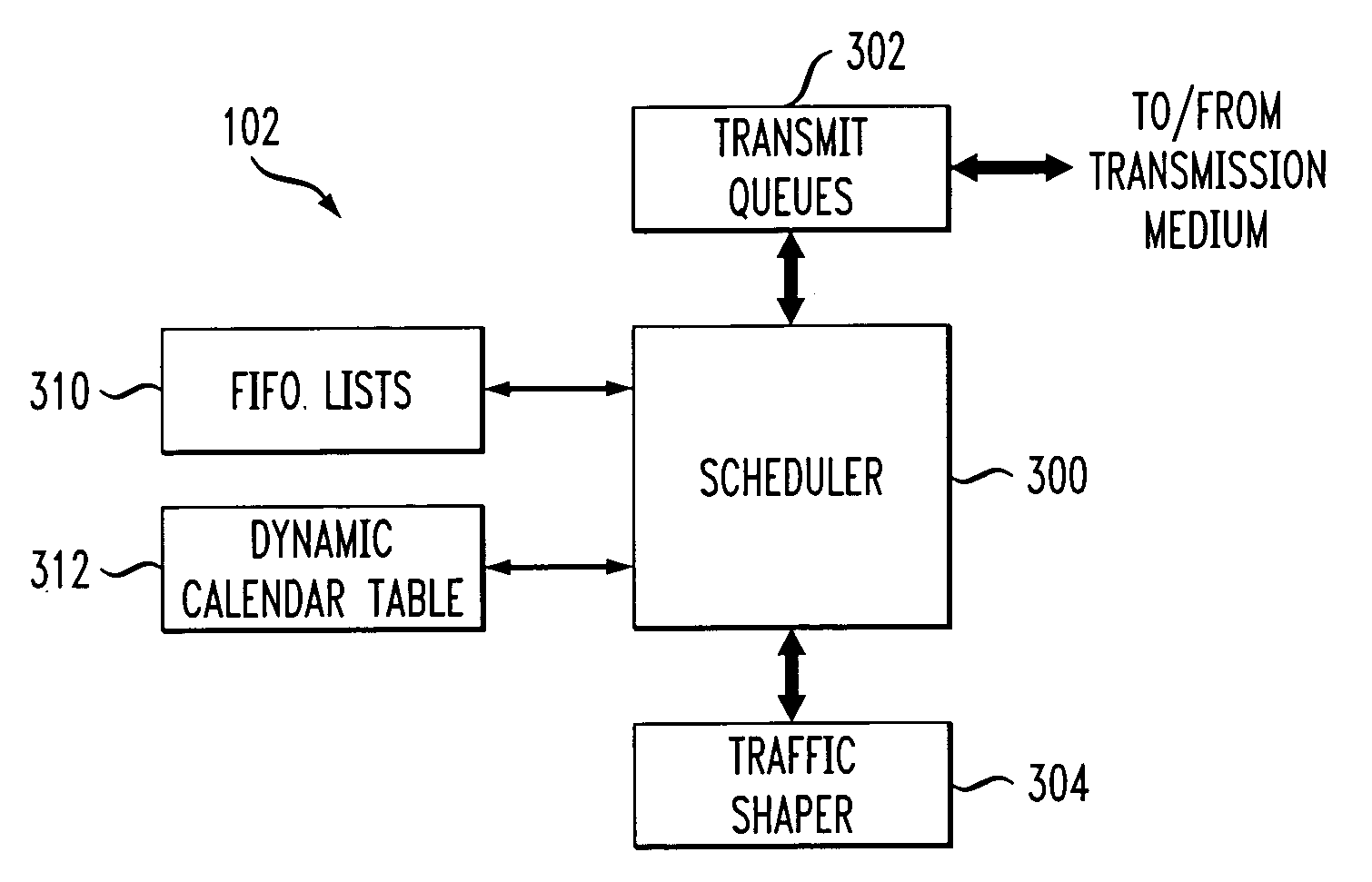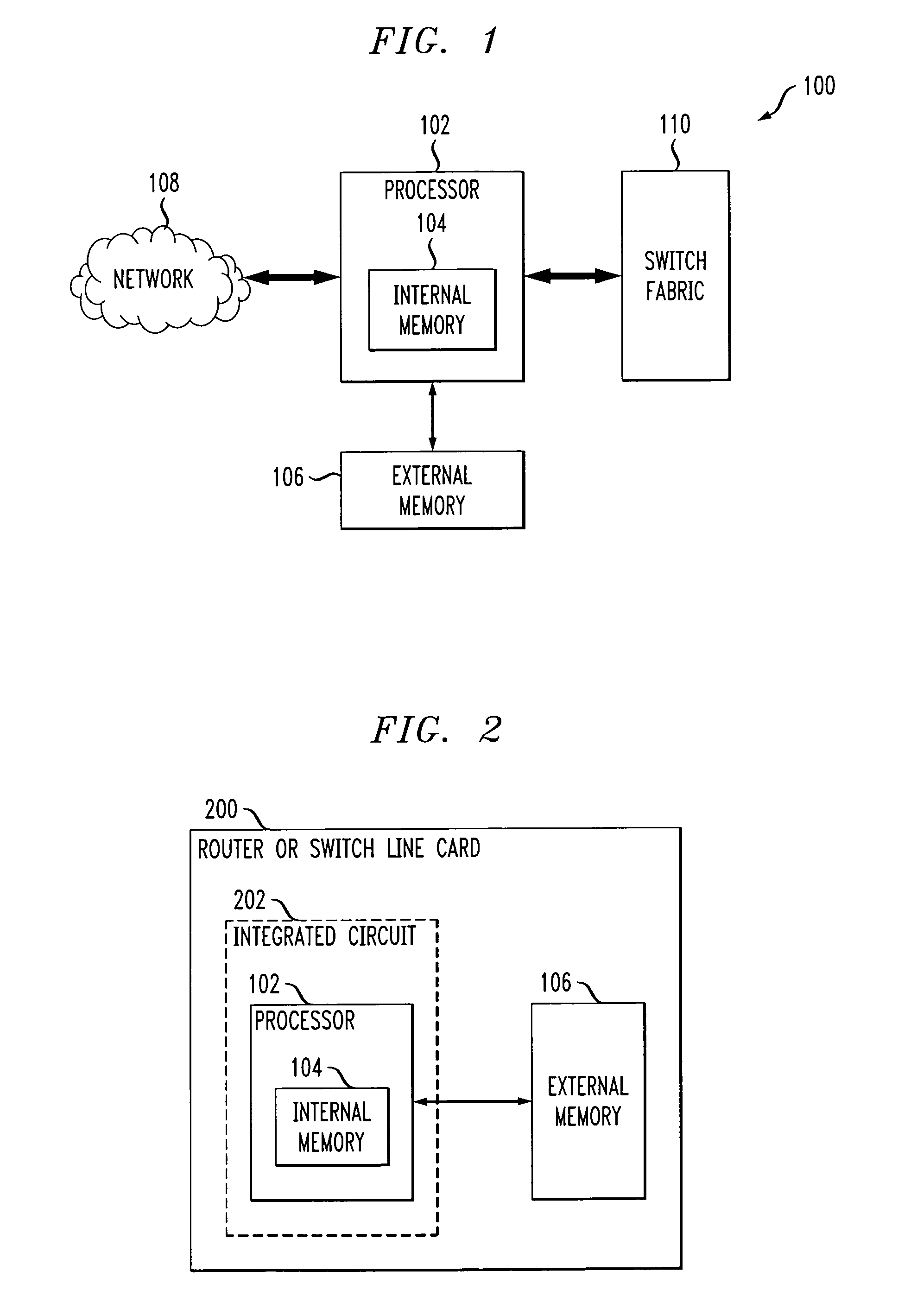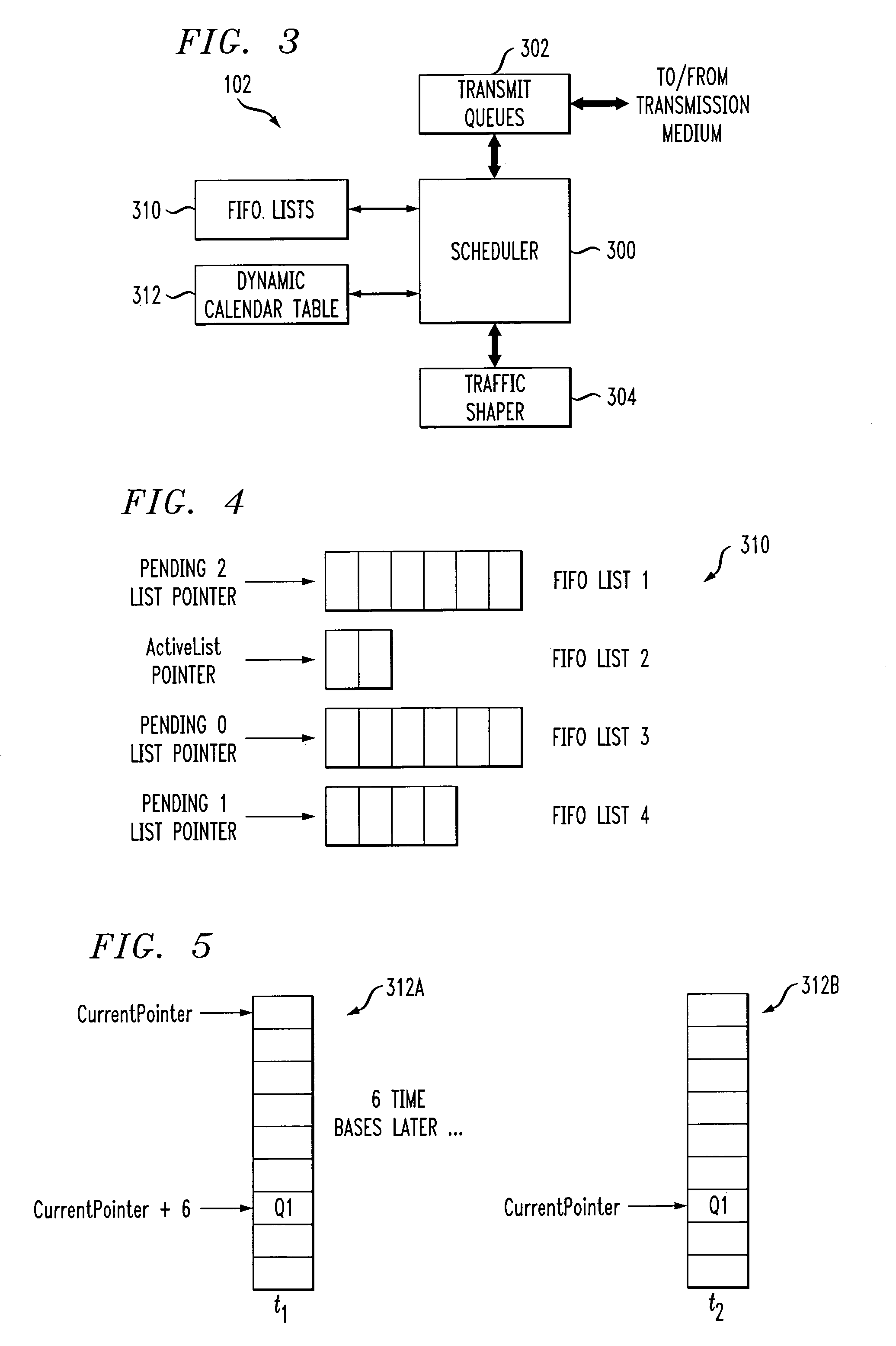Processor with scheduler architecture supporting multiple distinct scheduling algorithms
a scheduling algorithm and scheduler technology, applied in the field of processors with scheduler architectures supporting multiple scheduling algorithms, can solve the problems of wasted resources and dedicated hardware architectures failing to provide adequate flexibility to implement different scheduling algorithms, and achieve the effect of sufficient flexibility
- Summary
- Abstract
- Description
- Claims
- Application Information
AI Technical Summary
Benefits of technology
Problems solved by technology
Method used
Image
Examples
Embodiment Construction
[0018]The invention will be illustrated herein in conjunction with an exemplary system for processing data for transmission through a network. The exemplary system includes a network processor configured in a particular manner in order to illustrate the techniques of the invention. It should be understood, however, that the invention is more generally applicable to any processor in which it is desirable to provide improved flexibility in the implementation of a scheduling algorithm for use in the processor.
[0019]A “processor” as the term is used herein may be implemented, by way of example and without limitation, utilizing elements such as those commonly associated with a microprocessor, central processing unit (CPU), digital signal processor (DSP), application-specific integrated circuit (ASIC), or other type of data processing device, as well as portions and combinations of such elements.
[0020]The present invention in an illustrative embodiment improves scheduling operations in a ...
PUM
 Login to View More
Login to View More Abstract
Description
Claims
Application Information
 Login to View More
Login to View More - R&D
- Intellectual Property
- Life Sciences
- Materials
- Tech Scout
- Unparalleled Data Quality
- Higher Quality Content
- 60% Fewer Hallucinations
Browse by: Latest US Patents, China's latest patents, Technical Efficacy Thesaurus, Application Domain, Technology Topic, Popular Technical Reports.
© 2025 PatSnap. All rights reserved.Legal|Privacy policy|Modern Slavery Act Transparency Statement|Sitemap|About US| Contact US: help@patsnap.com



